Nissan’s Rogue worthy challenger for Toyota’s RAV4
Filed under: Weekly test drives, Autos
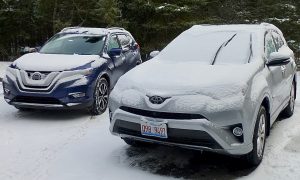
Cover them with an overnight snowfall, and the Nissan Rogue (left) and Toyota RAV4 are more similar — take your pick.
By John Gilbert
Early December in Northern Minnesota, forecast called for a high reaching a surprising 40 degrees. Three days later, it plunged from 39 to a single-digit low of 6 overnight. It was 13 the next day, then the forecast said heavy snowstorm blanketing the Duluth area, but the heavy stuff split, some of it staying north and the rest veering south, along Wisconsin’s South Shore, leaving Duluth and Lake Superior’s North Shore with a mere dusting. Couple days later, we got hit with another couple inches of snow.
The weather forecast can be boring, but not often in and around Duluth. It didn’t bother me, because of my luck of the test-drive draw that particular week. Almost as though they were related by potential, a Toyota RAV4 and a Nissan Rogue couldn’t have proven themselves more impressively. In the process, they provided a better understanding about why U.S. car-buyers are walking right past compact and midsize sedans to get to the SUVs across the showroom. Compact SUVs, often called CUVs for Crossover Utility Vehicles, have taken over.
Two of the mainstays of the compact SUV trend are Toyota’s RAV4, and Nissan’s Rogue. There are dozens of others, such as the Honda CR-V, and a couple of my personal favorites in the Hyundai Tucson and the Mazda CX-5.
But the RAV4 has become the largest-selling vehicle in Toyota livery, which is astounding because of the popularity of the Camry, and the Rogue has much more quietly become Nissan’s largest seller.
The more they advance, the more similar they seem to be, and by sheer coincidence, the week where we had the weird temperature shift from mild to numbing cold to snow, I happened to be able to switch back and forth between a 2017 RAV4 and a 2018 Rogue. Mother Nature didn’t stand a chance.
You are not likely to change a Toyota buyer over to a Nissan, nor will you convince a Nissan buyer to switch allegiance. Same goes for Honda, Mazda and now even Hyundai buyers, as well as several others. But there aren’t a lot of major letdowns in the highly competitive group.
Nissan has updated its Rogue for 2018, adding some very nice creature features to the interior. Plush, red leather seats and full connectivity stuff complete the scenario, and I particularly liked the auto-start switch on the key fob, which worked easier than any others I’ve tested. Push the button from your kitchen, it starts up, and when you climb aboard you just hit the starter switch again and take off. No stop and restart. I also liked the CD player, while most companies are leaving those out. You can even get a very small third-row seat arrangement, which probably will remain folded down flat for stowage throughout their life spans.
Handling is firm and precise, and you always have the feeling that the Rogue is solid and firmly in command of all roadway problems. You can get Rogues for a base price of about $24,000 while the test vehicle, an SL AWD model, starts at over $26,000 and moves upward. The choice of engines is simple. You can get a hybrid model, but the standard 2.5-liter 4-cylinder has 170 horsepower and 175 foot-pounds of torque, feeding its pep through a continuously variable transmission (CVT). Read more
Jeep’s TrackHawk really DASHES through the snow
Filed under: Weekly test drives, Autos
By John Gilbert
Maybe it’s because the folks who build Jeeps are cousins to the FCA Group’s Dodge Boys, who keep giving new life to aging — vintage? — sedans, but the engineering crossover happened quicker and more efficiently than crossovers themselves. That’s why we now have something called the Jeep Grand Cherokee Trackhawk — which might be described as the perfect vehicle for somebody who wants to go off-roading extremely fast.
After my first, somewhat breathtaking, exposure to the 707-horsepower Trackhawk, which came on a road-racing track, my biggest question is how would such an enormously overpowered and highly-engineered vehicle work in the real world.
Now, my real-world is based on the North Shore of Lake Superior, up the road a piece from the westernmost point of the big lake, called Duluth. In the Duluth area, we have what you call “winter.” During winter, there is a lot of cold weather, and a lot of snow and ice. Having less power and more traction is usually an asset during the winter months. Finally, I got the chance to adequately test a Grand Cherokee Trackhawk just before Christmastime, and Mother Nature was kind enough to oblige with a nasty little snowstorm, which covered the North Shore with about 6 inches of snow, and then a temperature plunge that want down near zero, just to make it crusty.
The timing was good enough that I could ask my wife, Joan, and sons Jack and Jeff, for a special Christmas gift — a Trackhawk of my own. They rejected my suggestion out of hand. They offered some flimsy excuse like it wouldn’t fit under the Christmas tree, but I knew their reluctance was only because they couldn’t gather up the $90,880 on the sticker for the test vehicle.
Given a choice, every automaker in the world would like to provide what they call complete coverage of whatever segment they are in. Jeep, undoubtedly the most-recognized name in U.S. automobiles, is not immune from that desire, even though Jeep’s segment is comparatively small and well focused.
I mean, the original Jeep was built to go anywhere, particularly over rugged terrain while transporting soldiers or military officials through fields, mountains, streams and every other imaginable surface. So Jeep has excelled at building its Wrangler to do just that, and a surprisingly large gang of hobby off-roaders is forever grateful. Jeep then stretched upward, to build larger vehicles before the term “SUV” came along, and the Grand Cherokee has been a stalwart Sport Utility Vehicle since its inception.
From there, every direction came into play, and Jeep built the Cherokee, which was smaller, or less-grand, than the Grand Cherokee; then various diversionary vehicles, including the Wagoneer, Patriot, Compass, Renegade, and whatever. Finally, Jeep has streamlined itself to fofer the Grand Cherokee, Cherokee, Compass, Renegade, and Wrangler. That must have been where the Jeep engineers realized that their counterparts who build Dodge Chargers and Dodge Challengers, and even a competitive SUV called the Durango, were having a lot more fun than merely bouncing over off-road terrain. Read more
Quadrifoglio gives Giulia 505-horsepower kick
Filed under: Weekly test drives, Autos
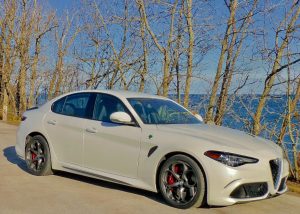
Looking identical to its turbo-4 brother, the Alfa Romeo Giulia Quadrifoglio has a Formula 1-inspired twin-turbo V6.
By John Gilbert
As a responsible automotive journalist, it’s been my long-standing motto to avoid losing it and gushing too favorably about any car. And, in looking back a month or two, I must take full responsibility for losing it when I reviewed the Alfa Romeo Giulia TI, with its great balance and handling and its potent 2.0-liter 4-cylinder engine.
Bear with me, because it’s that time again.
After just enough time between driving the bright red Giulia TI and the hard-core onset of winter, I got the chance to spend a week with a flistening Trofeo White Tri-coat Alfa Romeo Giulia Quadrifoglio.
If the 2.0 Giulia is the perfect sedan, then the Quadrifoglio is its muscular big brother. Reports are that parent Fiat instructed subsidiary Ferrari to assign its best Formula 1 engineers to build the hot little four, and they did well. Those engineers must have enjoyed coming to work every day to work on the Quadrifoglio, however, because they overachieved.
They were told to build engines that could make the new Giulia something truly special, and they came up with a 2.9-liter V6 — not very big, by V6 standards — and they forced power into it with twin turbochargers that resulted in 505 horsepower and 443 foot-pounds of torque. Driven through an 8-speed automatic transmission, with those giant paddles affixed to either side of the steering column, you need to be especially alert behind the wheel, because the Quadrifoglio could get away from you.
The four had a remarkable 276 horses and 295 foot-pounds of torque, and while that is far more than adequate, numbers like 505 and 443 allow the Quadrifoglio to rise to a whole ‘nother universe in scorching car performance. Read more
Equinox establishes new SUV standard at Chevrolet
Filed under: Weekly test drives, Autos
By John Gilbert
Interesting times, in the SUV universe known as General Motors, and more specifically Chevrolet. While other GM brands always have tried to specialize — Cadillac with all-out luxury, Buick with “near-luxury,” etc. — the strategy at Chevy has been to try to build all manner of vehicle for all customers.
Chevy’s Suburban started the whole SUV thing, back in the 1930s, and it not only still exists but is thriving as the giant of the segment. Slightly reduced in size is the Tahoe, which has grown to be so big that if you didn’t know the Suburban was still out there, you’d think the Tahoe was the industry giant.
Scaling down from there, we have the more midsize Traverse, then the still more compact Equinox, and finally the (subcompact?) Trax. As a dedicated small-as-you-can-stand advocate, I like the Trax, although I have always found the Equinox to be a pleasant compromise, being built on an automobile platform and gaining much more economy and efficiency than its larger siblings, but somehow managing to provide plenty of interior room, and good fuel economy — particularly when measured against the large-and-getting-larger Suburban.
The Traverse also works, although it’s just enough larger that it seems to require the optional V6 over the 4-cylinder engine. The Equinox seems to get along just fine with the 4.
For 2018, Chevrolet has taken a bold step and completely redesigned the Equinox — making it still more compact. The Equinox is now 4.7 inches shorter and its wheelbase is 5.2 inches shorter, which is quite a lot, and reduces the difference between the Trax and Equinox, while increasing the margin between Equinox and Traverse. The test Equinox 183.1 inches long, with a wheelbase of 107.3. It’s 65.3 inches tall and 72.6 wide.
Such a size reduction is indeed bold when you consider that the Equinox is Chevrolet’s second-largest-selling vehicle, trailing only the Silverado pickup! Read more
Mercedes E400 Coupe covers all sporty, luxury needs
Filed under: Weekly test drives, Autos
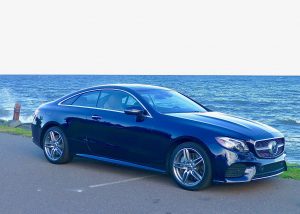
Mercedes has advanced technology filling its midsize E-Class sedans to the point that a sporty, 4-seat Coupe was the only way to turn.
By John Gilbert
You drive someplace in your Mercedes-Benz, and no matter which model — 2-door, 4-door, convertible, or SUV — you enjoy every second you’re behind the wheel. The feeling of refinement, of corraling all that power and channeling it into a luxurious body, is something you feel every foot of your drive.
When you park the Mercedes and climb out, the enjoyment and appreciation doesn’t end. Especially if you happen to be driving a 2018 Mercedes-Benz E400 4Matic Coupe. In the case of th E400 Coupe, it might be that your appreciation is heightened when you climb out and can take a few steps away and then look back at your prize.
A week with a test E400 4Matic Coupe wasn’t really fair. The car color was called Lunar Blue Metallic, and it was such a rich, dark blue that it defied normal definition. The first time my wife, Joan, walked out to the car with me, she got close and then said, “Oh. I thought it was black.” True, in subdued light, it looked like it might be a rich, black, but if you’re a blue fanatic, as I am, it might be the richest blue on the planet. Read more


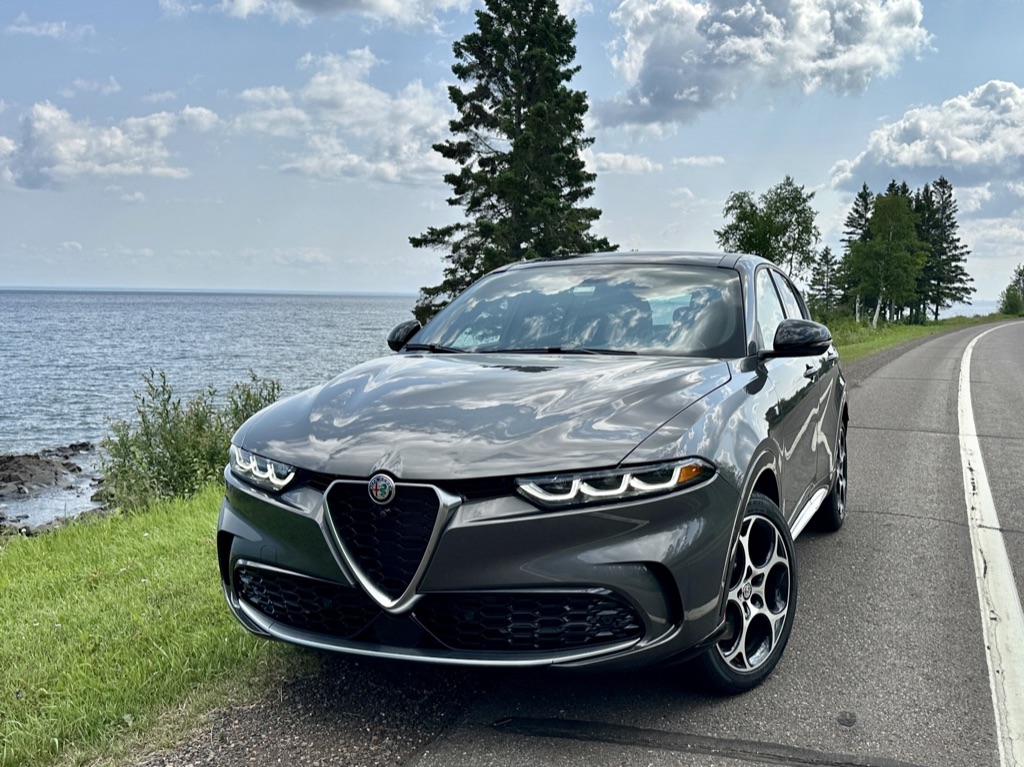


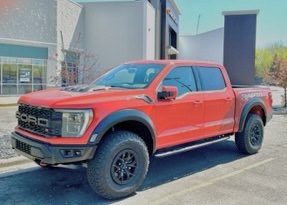

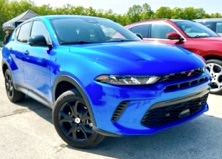


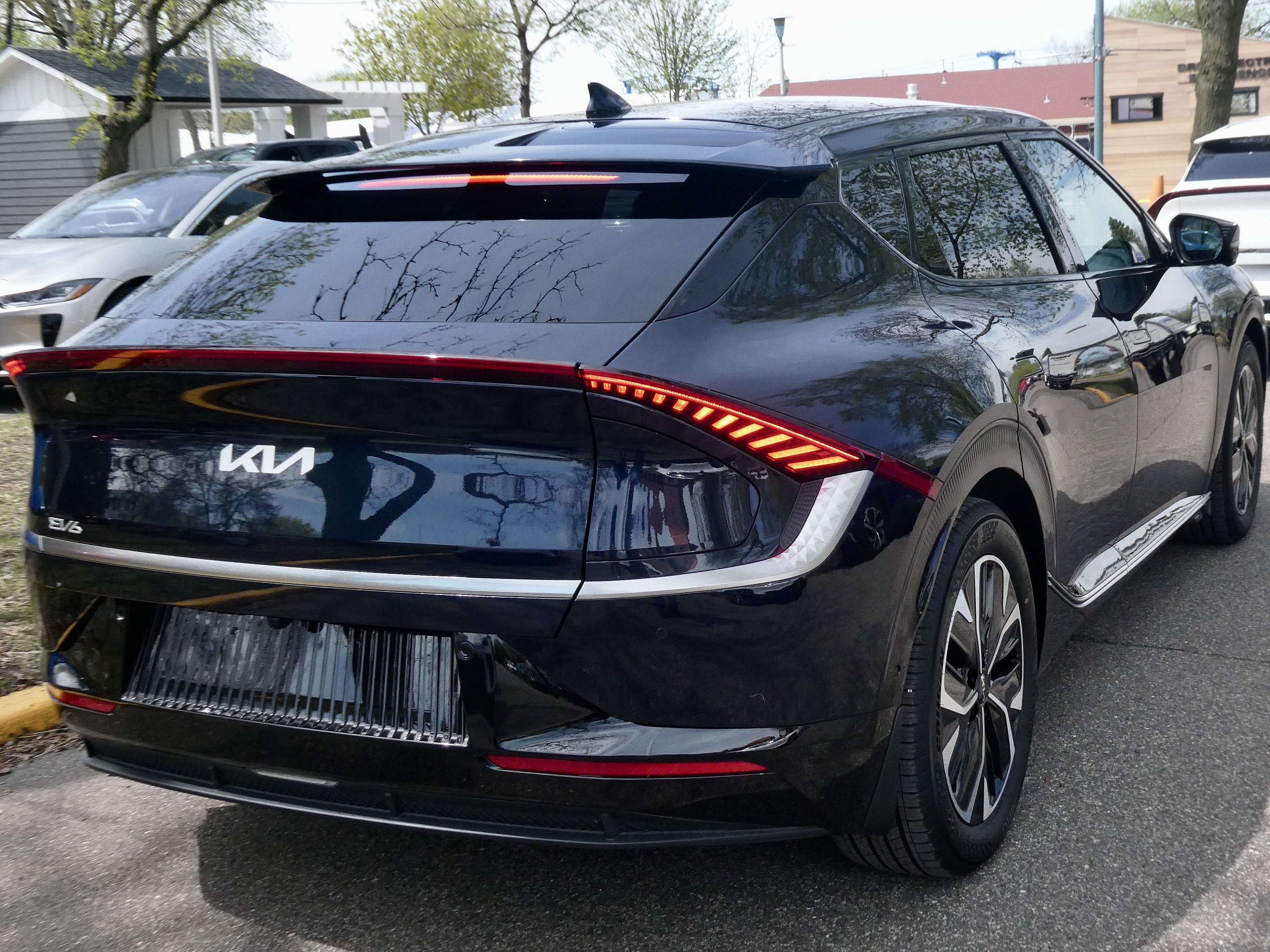
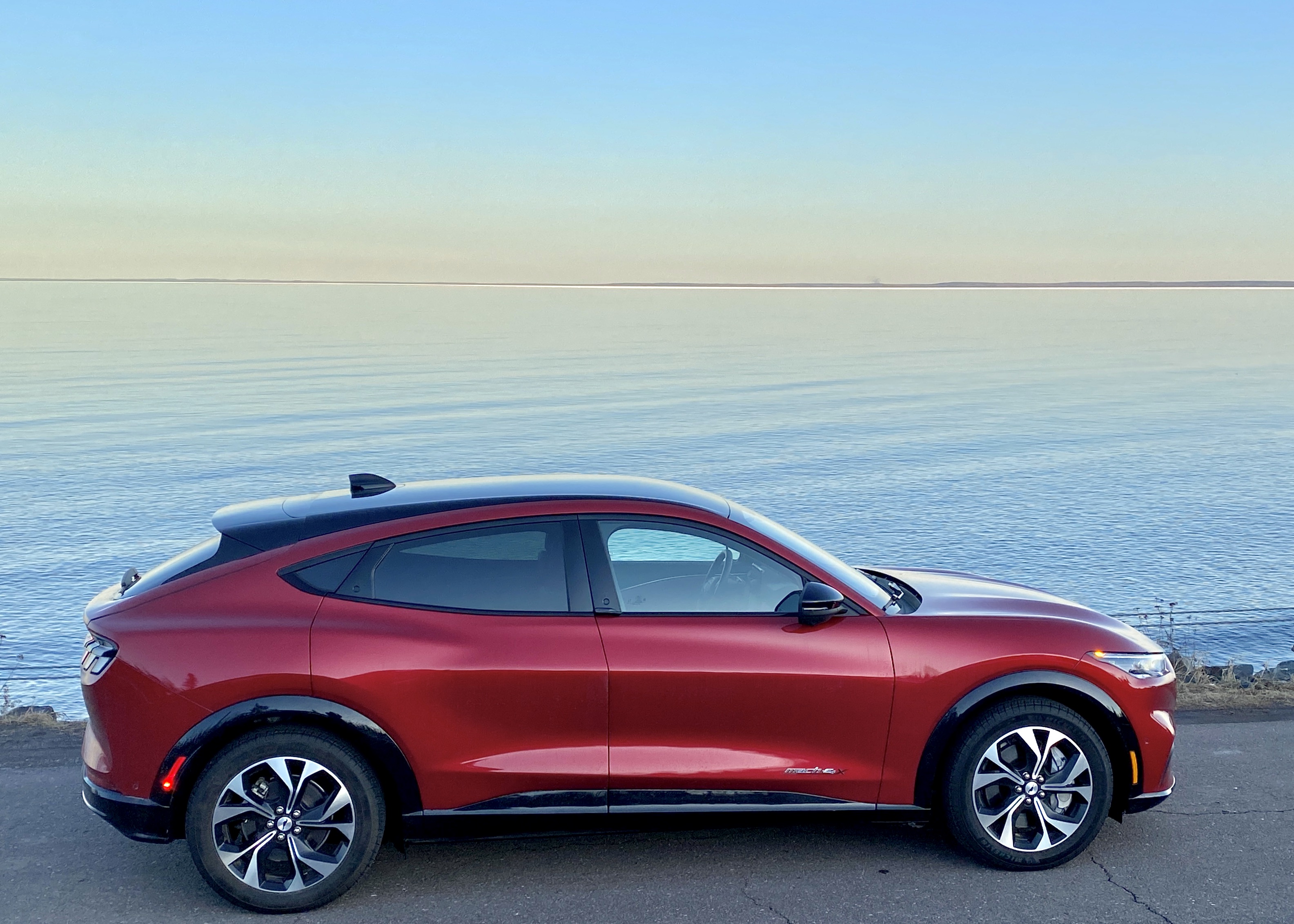
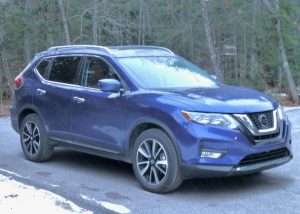
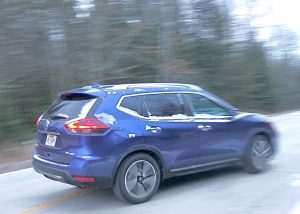
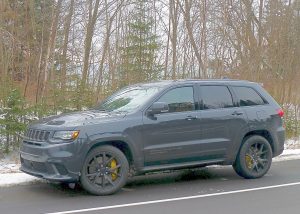
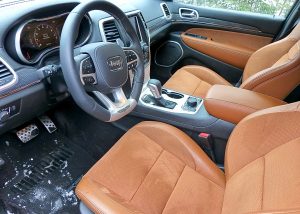
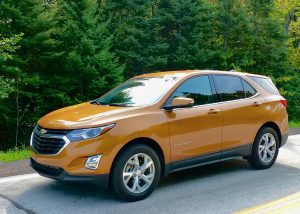
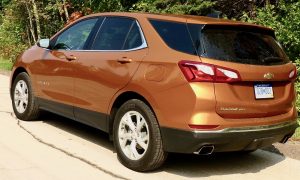
 John Gilbert is a lifetime Minnesotan and career journalist, specializing in cars and sports during and since spending 30 years at the Minneapolis Tribune, now the Star Tribune. More recently, he has continued translating the high-tech world of autos and sharing his passionate insights as a freelance writer/photographer/broadcaster. A member of the prestigious North American Car and Truck of the Year jury since 1993. John can be heard Monday-Friday from 9-11am on 610 KDAL(www.kdal610.com) on the "John Gilbert Show," and writes a column in the Duluth Reader.
John Gilbert is a lifetime Minnesotan and career journalist, specializing in cars and sports during and since spending 30 years at the Minneapolis Tribune, now the Star Tribune. More recently, he has continued translating the high-tech world of autos and sharing his passionate insights as a freelance writer/photographer/broadcaster. A member of the prestigious North American Car and Truck of the Year jury since 1993. John can be heard Monday-Friday from 9-11am on 610 KDAL(www.kdal610.com) on the "John Gilbert Show," and writes a column in the Duluth Reader.